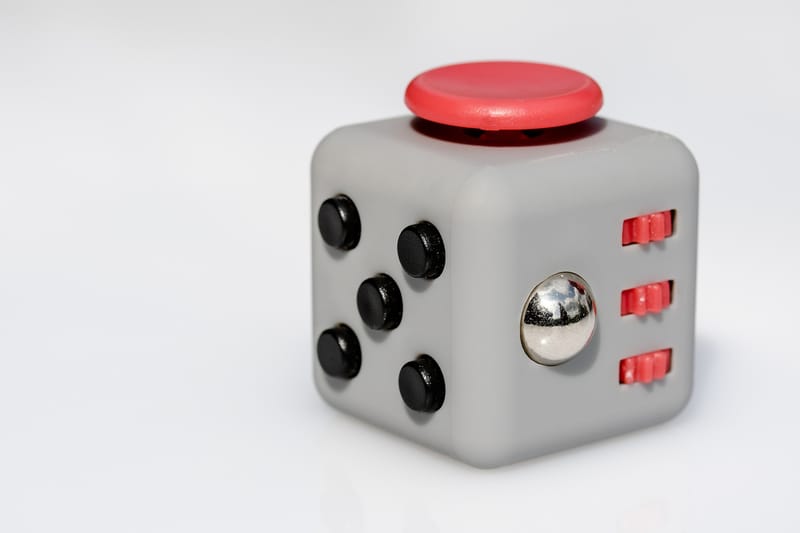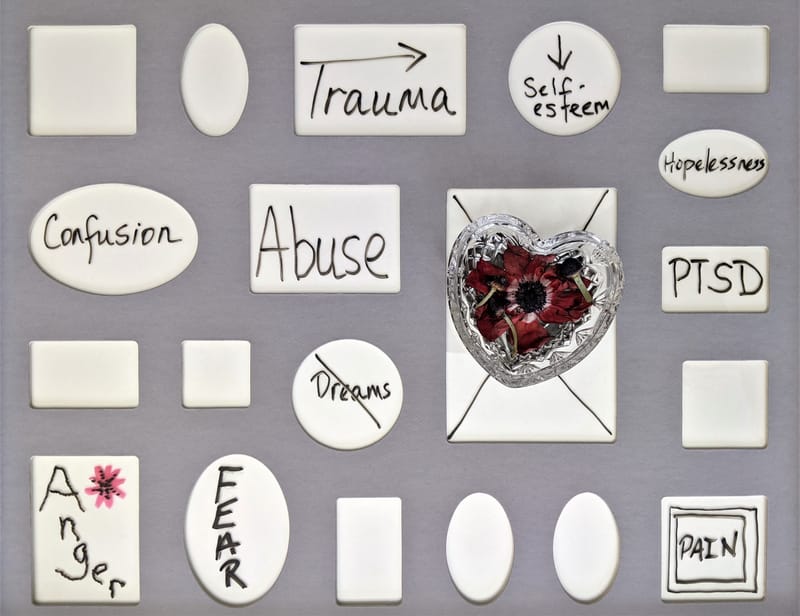Emotional

What is Emotional Anxiety?
Emotional Anxiety is where people are overwhelmed by the amount of information they have to take-in, either through thinking or their 5 senses. For autistic people, we have difficulty connecting with our emotions and this combined with the information that we have to take-in our day to day lives causes us to feel great distress, we could feel angry, sad or afraid but not be able to understand why we feel that way.

How does Emotional Anxiety affect people with autism?
The emotional distress autistic people will be in from Emotional Anxiety will lead them to burnout which is where people become emotionally and physically exhausted from their distress. Burnout is what will happen to them but it is how they deal with it that is the real issue. Autistic people will typically deal with burnout through either having a “Meltdown” or a “Breakdown”.

What are Meltdowns and Breakdowns?
Meltdowns and Breakdowns come from our natural Fight or Flight instincts which we have had since caveman times. Meltdowns are an autistic person’s Fight instinct in which they will become angry or frustrated which can get physical at times. Breakdowns are an autistic person’s Flight instinct where they choose to withdraw away from the situation they are in and hide until the danger passes. These happen because they don’t know how to say they are not okay and need help.

How do you manage Emotional Anxiety?
In short, here are 3 different strategies for you to try: Focus Yourself, Distract Yourself, For Outsiders. These strategies are all explained in further detail under the tabs above.

How do you “Focus Yourself”?
To Focus Yourself means to concentrate your mind away from what has happened or what will happen to you and instead concentrate your mind on what is happening now in the present as your present is the only thing can actually control. Down below, you can find some exercises that can help you to focus:

345 Breathing Exercise
When people get anxious, they tend to stop breathing normally, instead breathing in short, quick breaths. This leads to more anxiety as oxygen is struggling to enter their bodies that can help calm them. The 345 Breathing Exercise is a simple way to calm yourself by slowing your breaths to bring your breathing back to normal and thus calming you.

How do you do the “345 Breathing Exercise”?
Start by breathing in for 3 seconds, it helps to count in your head. Hold the breath in for 4 seconds and then breath out for 5 seconds. Repeat this at least 7 times, do more than that if you want to and you should find yourself feeling calmer allowing you to focus on what’s in front you.

54321 Sensory Exercise
When an autistic person becomes overloaded by taking in too much information, they become very distressed by what is around them and what will happen to them in the future. The 54321 Sensory Exercise can help distressed autistic people by having them look for specific things around them currently to remind of where they are now: The Present.

5 things you can SEE
Look around you and name 5 things you can see such as a window, an object or even something you can see outside of that window. When you have your 5, move on to the next part.

4 things you can TOUCH
Look around and find 4 things you can touch such as a cushion, a table or a wall. Go and actually touch these objects, feel them and be reminded where you are right now. Remember, try not to use any of the same “5 things you can SEE”. When you have touched 4 things move on to the next part.

3 things you can HEAR
Close your eyes and listen to what is around you. Pick out 3 sounds you can hear and clearly identify. Picture in your mind where you are based on the sounds you are hearing. When you have done this, move on to the next part.

2 things you can SMELL
Pick 2 things around you that you can smell such as food, smoke, perfume or even other people. Smell is very important when it comes to remembering things and the whole idea of this exercise is to remember where we are now. When you have your 2 smells, move on to the final part.

1 thing you can TASTE
Lastly, find 1 thing you can taste such as food, drink or even mints. Try to make sure this isn’t 1 of the 2 things you can smell. Actually taste it: sample the flavour, how sweet it is or how salty it is. Feel it in your mouth: the heat or cold of it, the hardness or softness of it. When you are satisfied with the taste, you are finished.

How do you “Distract Yourself”?
To Distract Yourself means to do something that will take your mind away from what is currently happening by focusing on something else. Down below, you can find some ideas of how to distract yourself when needed:

Step Outside
One of the easiest ways to distract yourself is to simply step outside the place you are in, as long as it is safe or possible to do so. The fresh air hitting your face, the open space and a quieter atmosphere can really help you calm down.

Listen to Music
Most people like to listen to music to distract them, especially on their smart phones. Remember, use headphones when listening to music so that you don’t distract other people who don’t want to be distracted. It is best to listen ambient or inspirational music as these can relax and motivate you. Aspie Heroes has a selection of music in the “Health&Wellbeing” section which you can find by clicking “Explore” at the top of the page.

Watch Stuff
You can watch stuff such as videos, tv show and films on your smartphones and tablets by streaming them. It is important to make sure ahead of time to check whether the apps allow you to download the things you want to watch to the app itself and that the app can work without an internet connection. This also means you need to download the stuff you want to watch before you go out somewhere.

Read Books
These can be physical or electronic. Physical Books are convenient in that they don’t need electricity or an internet connection to be used unlike music or video streaming. If you want to read books electronically, make sure they can work without an internet connection. Books like comics and manga are highly visual which is ideal if you aren’t a fan of books with lots of words, remember that autistic people are visual learners.

Play Games
These can be card games, board games or video games. You can play card games with on your own or with others. Solitaire/Patience is a card game you can play on your own. If you want to play a board game then you can buy travel versions of boardgames such as monopoly but you will need someone else to play with you though. There are all sorts of video games that you can play but the best ones to play that will distract you away and focus you, are puzzle games such as Tetris which can easily found on smart phone app stores.

Use a Fidget Toy
Fidget Toys are useful for people who need to distract themselves but still need to focus on something such as a lecture or a film. These toys work by giving a person’s hands something whilst their eyes and ears can remain focused. Some examples of fidget toys are: fidget spinners, fidget cubes(each side has different things you can fidget with) and stress balls. You can even get fidget smartphone apps; examples of these can be found on our ‘Tech Resources’ page which you can find by clicking the link below.
Link Here
What is “For Outsiders” for?
For Outsiders is for those who are not the people suffering a meltdown or breakdown but are the people who are watching a meltdown or breakdown happen in front of them and need to help the people suffering with it. To do this effectively, we have broken this down into easy to follow steps:

Identify their Triggers
If you know the person well enough you may know what triggers them already but if you don’t you should look around you and see what is triggering them. This could be something that has changed, objects that trigger bad memories, loud or unpleasant sounds, too many people around or something not going their way such as something being unavailable to them.

Remove the Triggers
Once you have established what the triggers are, see if you are able to remove them such as an object that triggers bad memories or an object that is making a loud, unpleasant sound.

Move the Person
If the trigger is to do with too many people around or is the sound of something like construction work then you can’t remove those, so instead you should move that person away from those triggers and into a quiet space/room (if possible). Do not move them without their consent first. If something has not gone the person’s way then there is nothing you can do about it by removing triggers.

Leave the Room
If the person is having a meltdown or breakdown it is best to leave them alone for a while so they can process their thoughts. Before you do this, it is very important to remove any objects from the room that could hurt the person or that they might use to hurt themselves or others as an act of safety. Remember, leaving the room is done as an act of safety (from a meltdown that is).

Check in on them
Stay close to where you left the person and make sure you check in on them often to see: how they are feeling, if they have come out of their meltdown/breakdown and simply the fact they are still in the room. The worst thing to happen if you don’t check in on them is that you find that they bolt (run away) from where you left them as they will not be thinking clearly which could lead them into trouble or worse, an accident.

Be empathetic to them
When the person has come out of their meltdown/breakdown they don’t want someone to criticise their actions, they want to be understood. You need to be empathetic with them by being calm and willing to listen to what they want to say, understanding that they deal with things differently to neurotypical (not autistic) people.

Talk to them about their Meltdown/Breakdown
This can be quite difficult so you must be willing to be patient with them. Firstly, ask if they want to talk about their Meltdown/Breakdown whilst also assuring them that you will not force them to talk if they don’t want to and that you are willing to listen to them when they are ready. When they are ready, find a quiet space to talk in, if you are not already in one.

Talk to them about their Meltdown/Breakdown Cont.
Reassure them that for autistic people, that anxiety is normal and having a Meltdown/Breakdown is part of the condition. This will help them learn to trust you making it easier for them to talk to you. Let them talk about what they want to without interrupting them and then ask them how you can help them with their problems. If they don’t know how you can help, suggest ideas to them. Use this talk to help them identify future triggers that may them cause anxiety in the future.

Live in the Present
Remember, we become depressed by the past and anxious towards what may happen in the future. The only way to deal with these, is to live in the present: Live for today, not for yesterday or tomorrow.